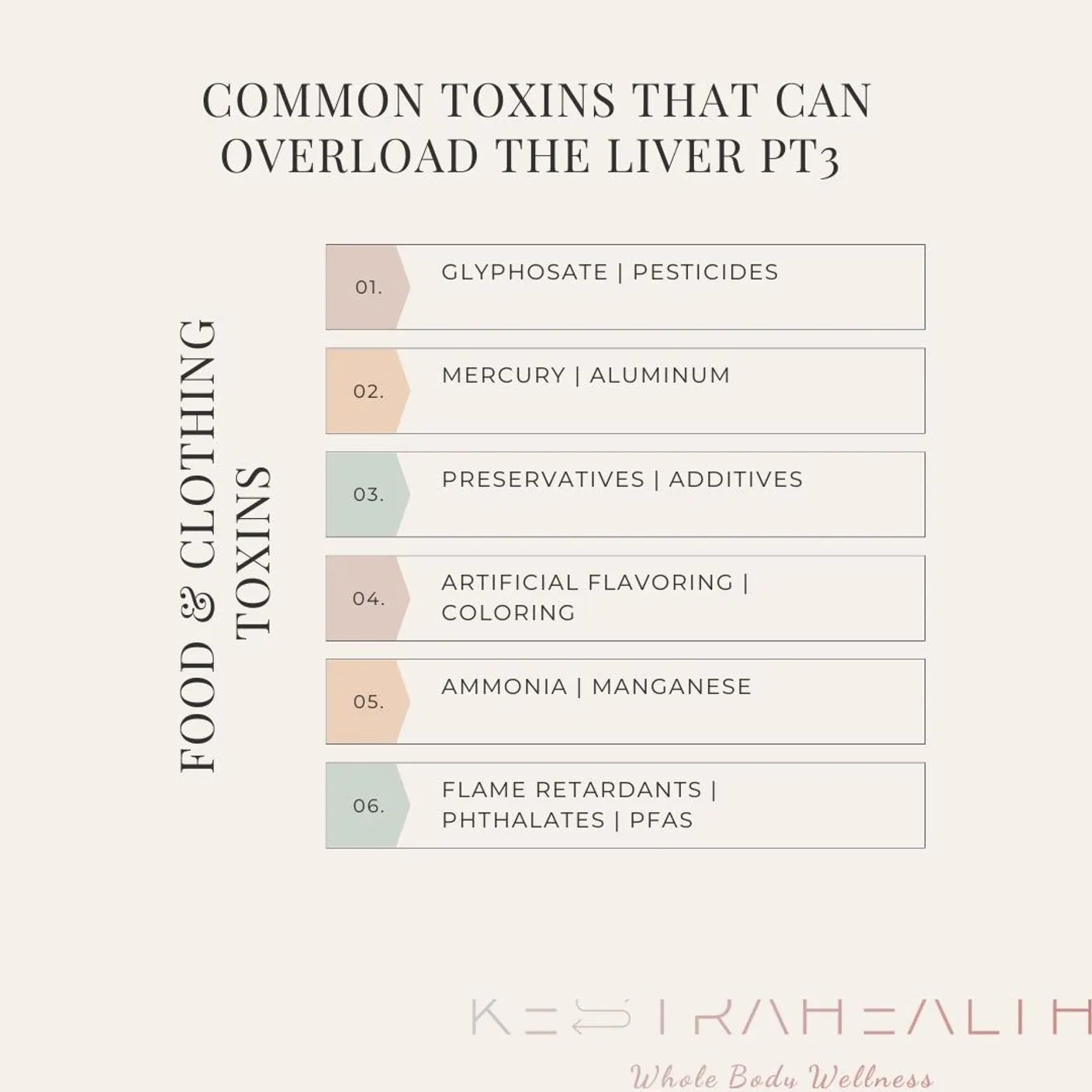The Hidden Burden (Part 3): Food, Fabric, and the Toxins You Didn't Know You Were Wearing or Eating


In Part 1, we explored environmental toxins like air pollution and mold.
In Part 2, we looked at personal care products and what’s hiding in your skincare.
And now, we’re rounding out the series by looking at something even closer: what you eat and wear.
That’s right, toxins in food and clothing can add to your liver’s daily burden, often without a single symptom until your system is already struggling.
Let’s break it down.
6 Common Toxins Found in Food & Clothing
Glyphosate & Pesticides
Found in: non-organic produce, grains, and processed foodsGlyphosate is one of the most widely used herbicides, and a known disruptor of your gut microbiome and liver detox enzymes. Long-term exposure may be linked to hormone disruption and even cancer risk.
Mercury & Aluminum
Found in: some seafood (like tuna and swordfish), cookware, and food packagingThese heavy metals are neurotoxic and difficult for the liver to eliminate once accumulated. Mercury in particular can damage enzymes and increase oxidative stress in the liver.
Preservatives & Additives
Found in: shelf-stable snacks, boxed meals, deli meats, and soft drinksThese synthetic ingredients often have no nutritional value and can strain your liver’s detox pathways while promoting inflammation and gut dysbiosis.
Artificial Flavoring & Coloring
Found in: candy, baked goods, cereals, and fast foodThese ingredients are often petroleum-based and linked to behavioral and neurological concerns, especially in children. Your liver must process each chemical dye and synthetic compound like a toxin.
Ammonia & Manganese
Found in: factory-farmed meats, processed foods, and even drinking waterElevated ammonia levels can signal poor detox function, while excess manganese has been linked to liver and neurological damage in high concentrations.
Flame Retardants, Phthalates & PFAS
Found in: clothing (especially stain-resistant or wrinkle-free), bedding, and furniturePFAS are known as “forever chemicals” because they don’t break down easily. They accumulate in your body over time and are linked to liver damage, hormone disruption, and immune dysfunction.
Why It Matters
These toxins often go unnoticed because they’re “normal” in modern living. But your liver doesn’t care how common they are, it still has to process them. When your detox pathways are constantly clogged, you may experience:
- Sluggish metabolism
- Brain fog or low energy
- Hormonal imbalances
- Skin breakouts or rashes
- Digestive issues
- Cravings and blood sugar crashes
It’s not your willpower, it’s your toxic load.
How to Lighten the Load
Here’s how to make small shifts that protect your body long-term:
- Choose organic produce when possible (focus on the Dirty Dozen list)
- Avoid artificial dyes and read food labels closely
- Invest in toxin-free cookware (ditch the nonstick)
- Buy GOTS-certified or OEKO-TEX® clothing, especially for children
- Support liver detox daily with hydration, cruciferous veggies, lemon water, and gentle movement
Putting It All Together: Support Your Liver Naturally
Your liver doesn’t need a crash detox, it needs daily support and a little breathing room. That’s exactly what we focus on at Kestra Health.
Through our 1:1 coaching and seasonal group detox programs, I help you:
- Identify hidden sources of toxic burden
- Rebuild your foundation through food, movement, and self-care
- Create sustainable habits that support your liver, hormones, gut, and mind
If you’re feeling stuck, tired, inflamed, or just off—this may be the missing piece.
Ready to Take the Next Step?
Join our next Group Detox
Book a free Discovery Call
Or explore Integrative Coaching for personalized support
Let’s create a health routine that works with your real life, and gets your body back to feeling strong, clear, and balanced.
With purpose,
Brooke
Certified Integrative Health Practitioner | Founder, Kestra Health
Whole Body Wellness from the Inside Out